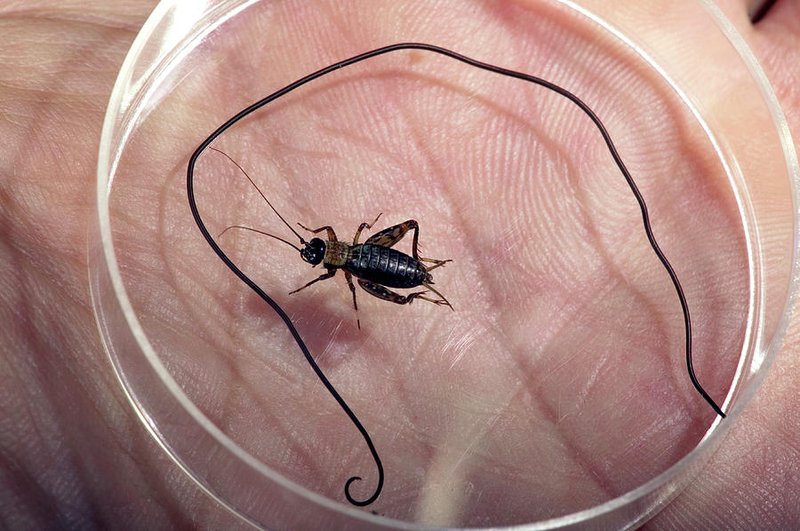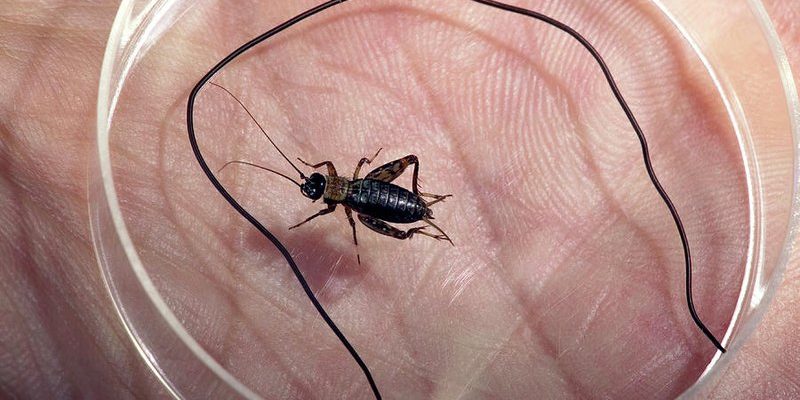
Now, let me clarify: hairworms belong to the phylum Nematomorpha and are known for their long, slender bodies, which can reach impressive lengths. They typically use their host to complete their life cycle, but the type of environment they thrive in can vary quite a bit. So, whether you’re just curious or have a budding interest in biology or ecology, exploring the habitat preferences of hairworms in the wild is like peeling back the layers of a fascinating, natural puzzle.
What Are Hairworms and Where Do They Come From?
Hairworms, or horsehair worms, are parasites that primarily infect insects. They start their lives as larvae, finding a suitable host, which is typically an insect such as a grasshopper or cricket. The worm then develops within the host, often producing chemicals that affect the host’s behavior. After a period of growth, the hairworm prompts its host to seek water, where it then emerges to continue its life cycle. This transformation is so intense that it almost seems like the hairworm takes over the insect’s brain!
You might be wondering why understanding their origin points is essential. It helps scientists determine what environments these worms can adapt to best and how they interact with their ecosystems. Generally, hairworms thrive in moist habitats, as their life cycle is closely tied to water sources. This connection underscores the importance of water bodies, such as ponds and streams, in their development.
Moist Environments: A Hairworm’s Best Friend
Hairworms are particularly fond of damp and moist environments, which facilitate their lifecycle. In many cases, they’re found in areas with high humidity, as this helps keep their bodies hydrated. Think of it like us wanting a cool drink on a hot day; hairworms need moisture to survive and thrive.
These creatures prefer environments where they can easily find their preferred hosts. Areas rich in vegetation, like lush gardens or fields, are often prime hunting grounds because they harbor a variety of insects. You might find hairworms near ponds, marshes, or even on the edges of streams, where the combination of moisture and insect activity creates a perfect habitat.
Why Water Matters
Water sources play a crucial role in the life cycle of hairworms. Without access to water, they can’t emerge from their hosts. A grasshopper, influenced by the hairworm, seeks water, jumping in without realizing it’s a one-way ticket for its eventual demise. Here’s a fun image: picture a grasshopper making a beeline for the local pond, only to unwittingly fulfill its role in the hairworm’s life story.
So when you think about the *habitat preferences of the hairworm*, envision places that are not just damp but also rich in insect life and water. This combination helps ensure a steady flow of potential hosts.
Common Hosts: The Insects Hairworms Prefer
When exploring the habitat preferences of hairworms, we can’t overlook their favored hosts. Hairworms typically target insects like crickets, grasshoppers, and beetles. Each of these hosts provides a unique environment that supports the hairworm’s development. In general, the more common these insects are in an area, the more likely you are to find hairworms nearby.
These insects are often found in grassy or bushy areas, where they feed and breed. The presence of a healthy insect population means a better chance for hairworms to propagate. It’s a classic example of the dance of life in nature, where one creature’s flourishing community can support the life cycle of another.
Seasonal Variations in Habitat Preference
Interestingly, hairworm activity can vary by season. During warmer months, especially spring and summer, their host population tends to be more abundant. Rainy weather often creates the ideal damp conditions for both the hairworms and their insect hosts. So if you’re out exploring in the summer after a rain shower, you might just stumble across more hairworms than you’d like to think!
In contrast, during the colder months, the population might dwindle, and their activity levels drop. It’s during these times that you might find hairworms dormant in the soil or searching for hosts that have adapted to survive the chill.
Impact of Habitat Loss on Hairworm Populations
Human activity has a significant impact on local ecosystems, and hairworms are no exception. Habitat destruction can drastically reduce the numbers of both hairworms and their insect hosts. Urbanization, pollution, and climate change all disrupt the delicate balance of these environments.
With more green spaces disappearing, the lush habitats that support both grasshoppers and hairworms are becoming scarcer. This can lead to reduced population sizes, threatening the hairworm’s lifecycle.
Here’s the thing: when we lose insects, we lose the intricate web of life that supports various species, including hairworms. It’s a stark reminder of how interconnected nature can be—and why every little bit of habitat counts.
Understanding the habitat preferences of the hairworm not only tells us about this intriguing parasite but also highlights the broader ecological connections in our environment. These creatures rely on moist, rich ecosystems to thrive, making their existence a vital part of the food chain.
As we learn more about these fascinating worms and the habitats they prefer, it becomes clear just how essential it is to protect our natural spaces. Whether it’s by maintaining healthy wetlands or creating greener urban environments, every effort contributes to a thriving ecosystem. So next time you’re out in nature, keep an eye out for those grasshoppers and remember the hairworms that shape their lives—it’s a wild world out there, and we’re all part of it!

